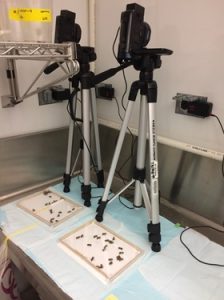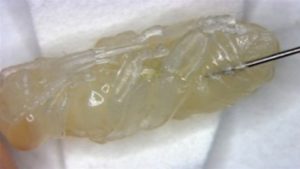Numerous viruses have been discovered in honey bees and we focus on the important Deformed Wing Virus and Israeli Acute Paralysis Virus. We perform experimental studies to determine the interaction between the viruses and their honey bee hosts with functional genomic tools (RNASeq) and study the intra- and intercolonial transmission pathways of the viruses. We think that studies of the transmission networks in the social honey bee system can be used as a general empirical model to understand how the modification of social interactions can be used to limit the spread of infectious diseases. Thus, we are interested in comparing social and individual immunity in honey bees to learn broader lessons about these concepts. Furthermore, we seek to identify and characterize genetic variation in virus resistance with the ultimate goal of breeding for virus-resistance and combine these efforts with the other mechanistic studies to help improve honey bee health.



Examples:
Amiri E., Seddon G., Zuluaga-Smith W., Strand M.K., Tarpy D.R., Rueppell O. (2019) Israeli Acute Bee Paralysis Virus: queen-worker interaction and potential virus transmission pathways. Insects, 10(1): 9.
Amiri E., Kryger P., Meixner M.D., Strand M.K., Tarpy D.R., Rueppell O. (2018) Quantitative patterns of vertical transmission of deformed wing virus in honey bees. PLoS ONE, 13(3): e0195283.
Amiri E., Strand M.K., Rueppell O. & Tarpy D.R. (2017) Queen quality and the impact of honey bee diseases on queen health: potential for interactions between two major threats to colony health. Insects, 8(2), 48.
Boncristiani H.F., Evans J.D., Chen Y., Pettis J., Murphy C., Lopez D.L., Simone-Finstroem M., Strand M., Tarpy D.R., Rueppell O. (2013) In-vitro infection of pupae with Israeli Acute Paralysis Virus suggests variation for susceptibility and disturbance of transcriptional homeostasis in honey bees (Apis mellifera). PLoS ONE, 8(9): e73429.